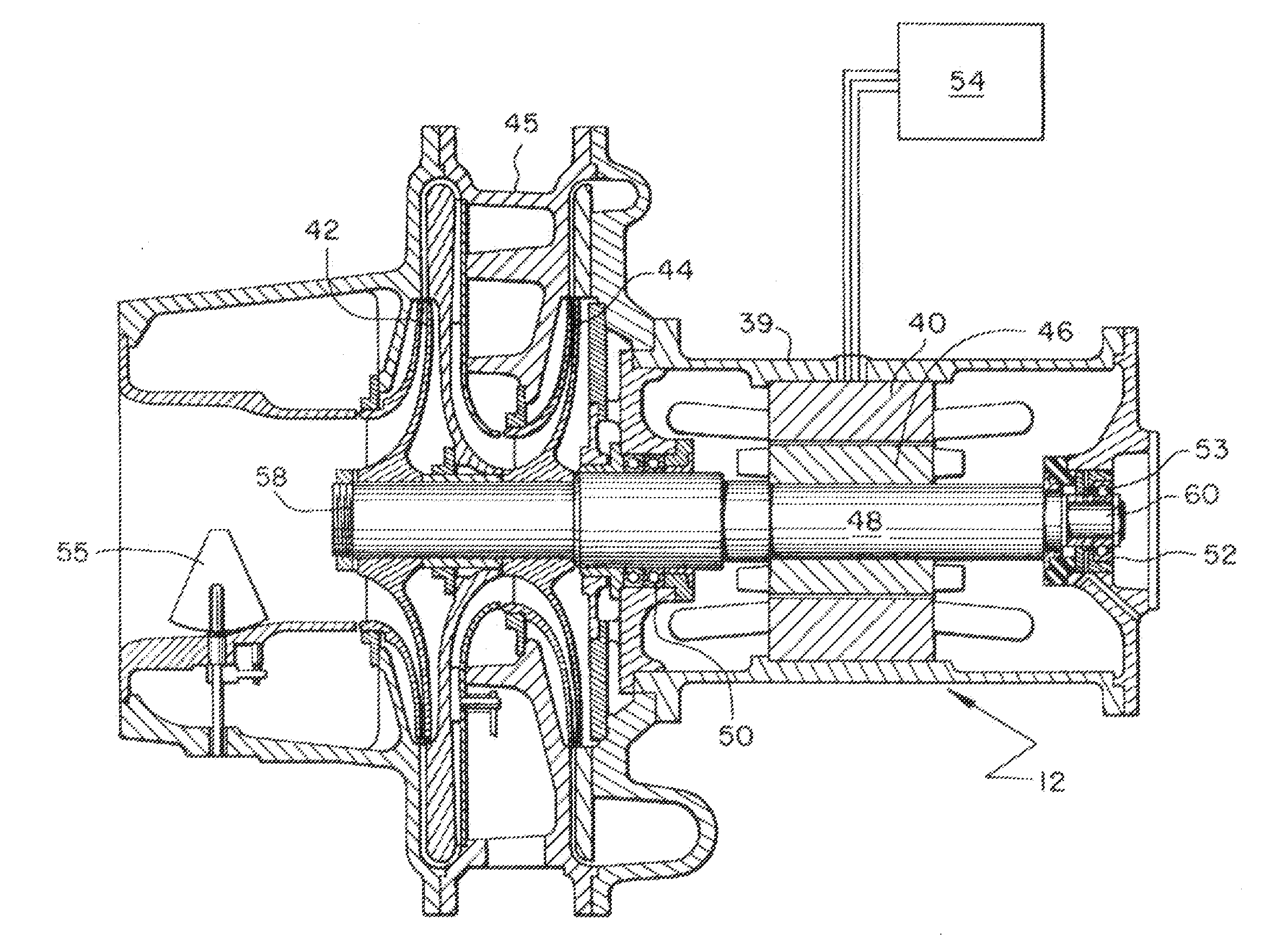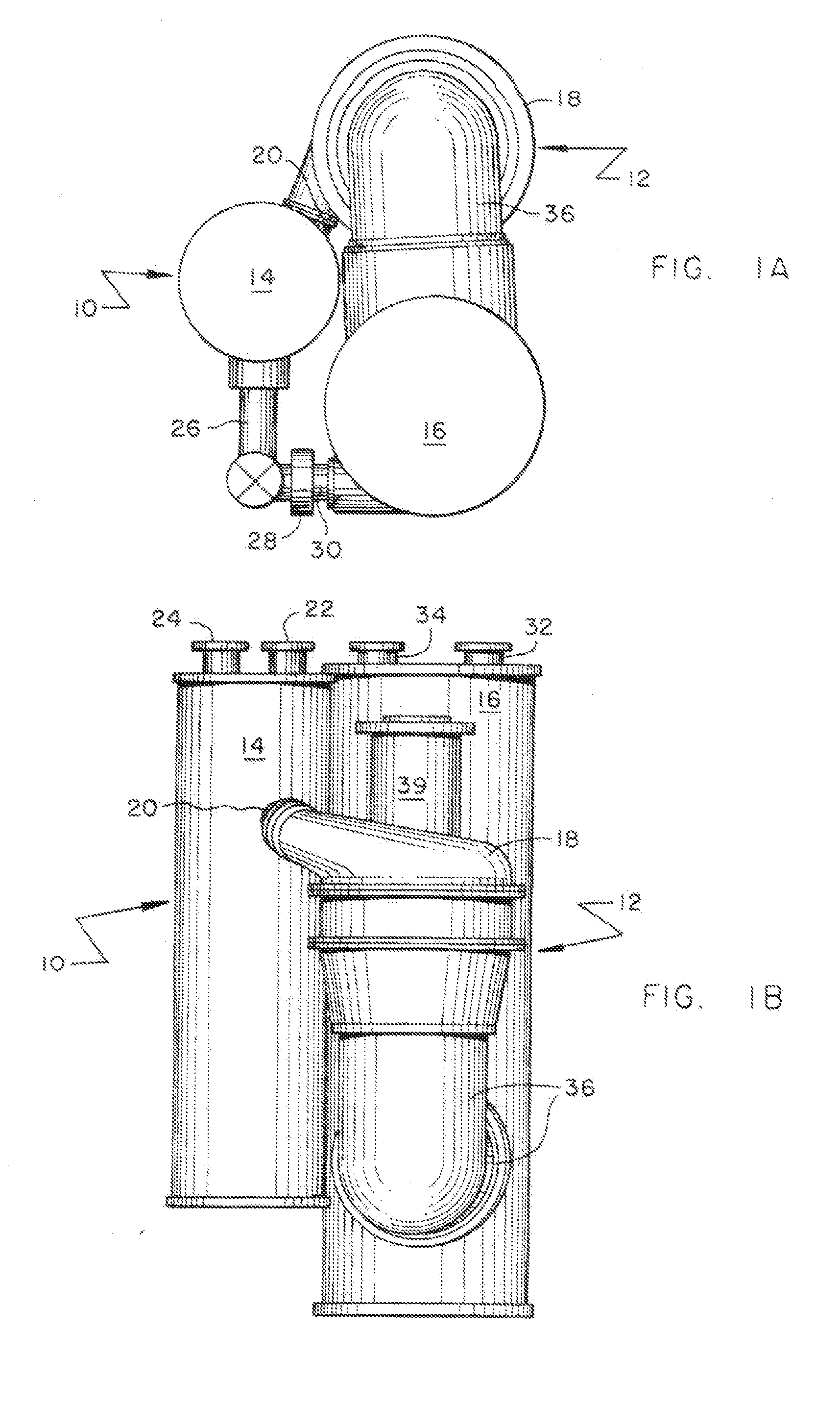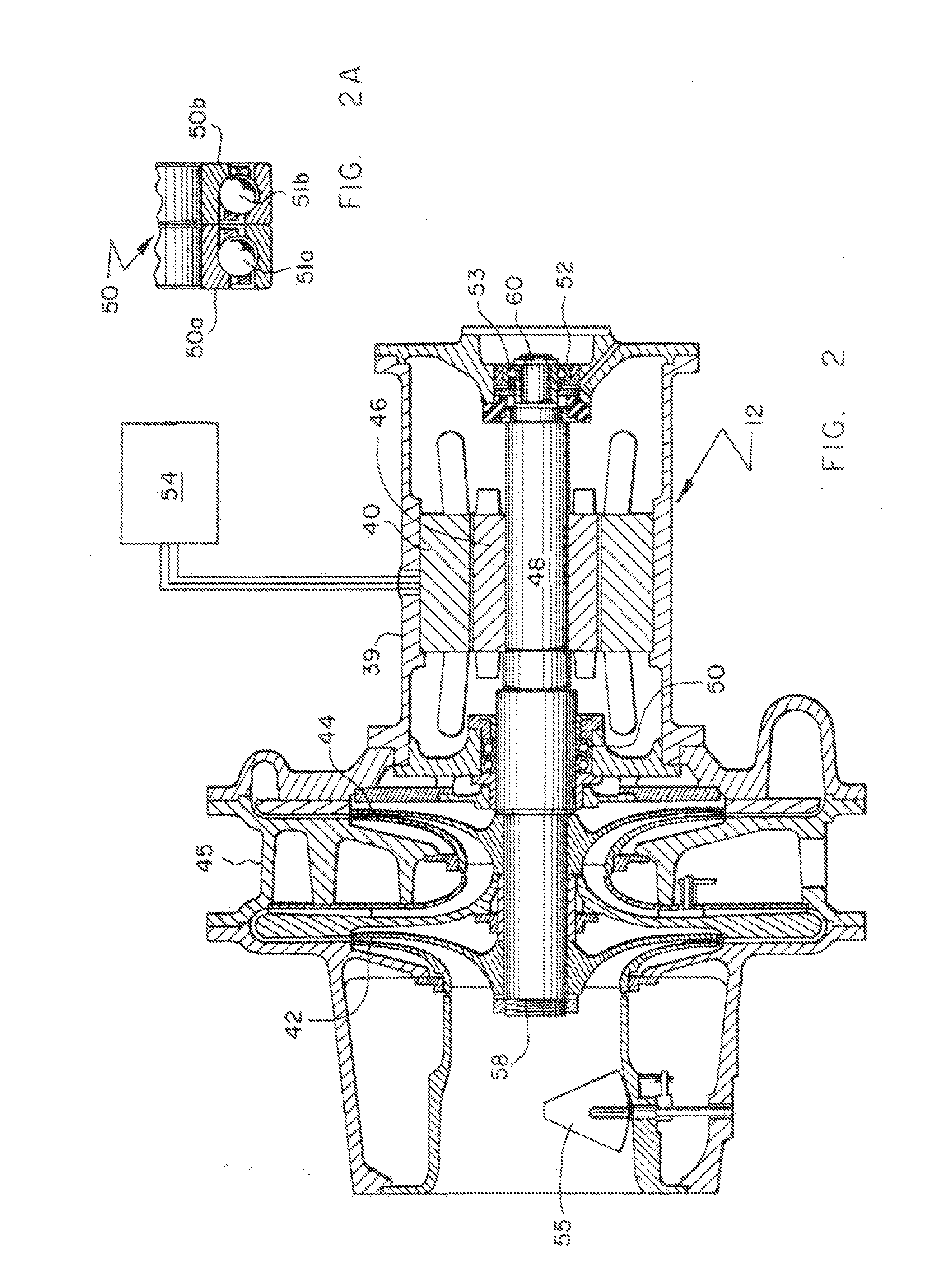Rolling element bearings for an oil-free liquid chiller
a technology of rolling element bearings and liquid chillers, which is applied in the direction of liquid fuel engines, machines/engines, light and heating apparatus, etc., can solve the problems of high initial and operational costs, unique and challenging bearing lubrication issues, and the lubrication of rotating components that has historically proven both challenging and expensive, and achieves enhanced compressor cooling and high operational speeds. , the effect of less mass
- Summary
- Abstract
- Description
- Claims
- Application Information
AI Technical Summary
Benefits of technology
Problems solved by technology
Method used
Image
Examples
Embodiment Construction
[0041]Referring to Drawing FIGS. 1a and 1b, a chiller 10, which in the preferred embodiment is a centrifugal chiller, and its basic components are illustrated. In that regard, chiller 10 is comprised of a compressor portion 12, a condenser 14 and an evaporator 16. Refrigerant gas is compressed within compressor portion 12. Such refrigerant gas is directed out of discharge volute 18 into piping 20 which connects the compressor to condenser 14.
[0042]Condenser 14 will typically be cooled by a liquid which enters the condenser through inlet 22 and exits through outlet 24. This liquid, which is typically city water or water that passes to, through and back from a cooling tower, exits the condenser after having been heated in a heat exchange relationship with the hot, compressed system refrigerant which is directed out of the compressor into the condenser in a gaseous state.
[0043]The heat exchange process occurring within condenser 14 causes the relatively hot, compressed refrigerant gas ...
PUM
| Property | Measurement | Unit |
|---|---|---|
| Fraction | aaaaa | aaaaa |
| Fraction | aaaaa | aaaaa |
| Fraction | aaaaa | aaaaa |
Abstract
Description
Claims
Application Information
 Login to View More
Login to View More - R&D
- Intellectual Property
- Life Sciences
- Materials
- Tech Scout
- Unparalleled Data Quality
- Higher Quality Content
- 60% Fewer Hallucinations
Browse by: Latest US Patents, China's latest patents, Technical Efficacy Thesaurus, Application Domain, Technology Topic, Popular Technical Reports.
© 2025 PatSnap. All rights reserved.Legal|Privacy policy|Modern Slavery Act Transparency Statement|Sitemap|About US| Contact US: help@patsnap.com



